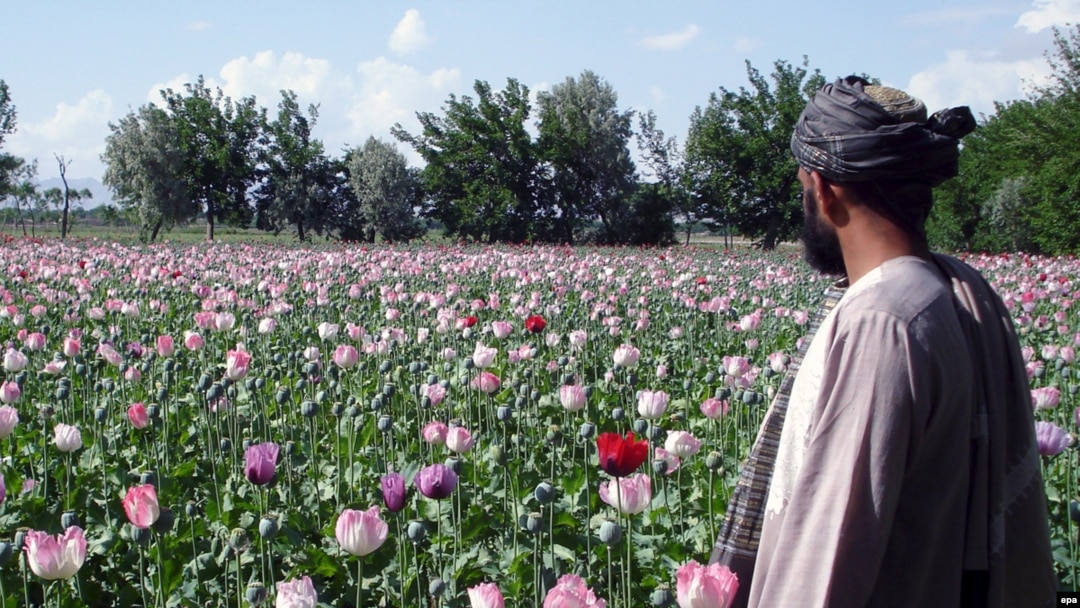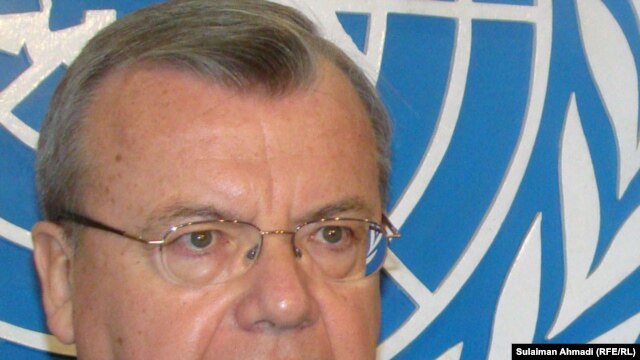UNITED NATIONS -- Despite a sharp decline in opium production in 2010 and a modest reduction in coca cultivation, the global manufacturing of heroin and cocaine remains at significantly high levels, according to a new report from the United Nation's Office on Drugs and Crime (UNODC).
The 2011 World Drug Report, which was released on June 23 at UN headquarters in New York, found that some 210 million people took illicit drugs last year, an estimate it said was probably too low.
UN Secretary-General Ban ki-Moon emphasized the harm done by the drug traffickers.
"Traffickers break more than the law," he said "They break the human spirit. They fuel terrorism and insurgency. They rob societies of peace."
The report found that global opium poppy cultivation reached 195,700 hectares in 2010, representing a small increase compared with 2009. Opium production declined, however, by 38 percent -- to 4,860 tons -- due to a blight that wiped out much of the opium harvest in Afghanistan.
UNODC Executive Director Yury Fedotov said the 3,600 tons of opium Afghanistan produced last year makes it, as usual, the world's leading producer.
Shared Responsibility Requires A Coordinated Response
Last year's yield comprised 74 percent of the global supply of the drug, down from 88 percent in 2009.
"Although overall illicit opium production declined…last year, that was mainly due to a plant disease that wiped out half of Afghanistan's poppy crop," he said. "Our preliminary findings indicate that Afghanistan's opium production will probably bounce back this year due to better yields."
Fedotov credited the international community with understanding that stopping Afghan opium production is a shared responsibility that requires a coordinated response.
The Paris Pact, for example, unites more than 50 states and international organizations in the fight against Afghan opiate trafficking, consumption, and related problems in countries along supply routes.
"In Afghanistan, opium cultivation is closely linked to insecurity and trafficking in opium and heroin is helping to spread instability through the wider region," he said.
The report noted that cooperation at the regional level is increasing. The Triangular Initiative, for example, is a counternarcotics information-sharing effort involving Afghanistan, Iran, and Pakistan.
Two others are the Central Asian Regional Information and Coordination Centre, and Operation TARCET -- an anti-trafficking initiative to prevent the smuggling of chemicals to Afghanistan for use in the manufacture of heroin.
New Initiatives, Especially In Kyrgyzstan
The report credits the initiatives with the interception and seizure of tons of illicit drugs and precursor chemicals.
Fedotov said the UNODC, meanwhile, is developing a new initiative called the Regional Program for Afghanistan and Neighboring Countries, as well as new counternarcotics programs in Afghanistan and Kyrgyzstan:
"We consider, in particular, Kyrgyzstan one of our priorities because drug trafficking and organized crime are undermining stability, development and the rule of law, and jeopardizing the political reform process," he said.
"UNODC capacity-building assistance, including strengthening Kyrgyzstan's new State Service on Drug Control, as well as the Drug Control Agency in neighboring Tajikistan, will help to stabilize these countries and allow political reform and democracy to take root."
The report cautions that supply reduction measures will only succeed if demand is also reduced. So it emphasizes the need to implement effective measures to prevent people from using drugs, and providing drug-dependent people with treatment, care, and support.
But Fedotov noted that even in Europe, which is where most heroin is bought, only about 20-25 percent of heroin users get treatment for their addiction.
The 2011 World Drug Report, which was released on June 23 at UN headquarters in New York, found that some 210 million people took illicit drugs last year, an estimate it said was probably too low.
UN Secretary-General Ban ki-Moon emphasized the harm done by the drug traffickers.
"Traffickers break more than the law," he said "They break the human spirit. They fuel terrorism and insurgency. They rob societies of peace."
The report found that global opium poppy cultivation reached 195,700 hectares in 2010, representing a small increase compared with 2009. Opium production declined, however, by 38 percent -- to 4,860 tons -- due to a blight that wiped out much of the opium harvest in Afghanistan.
UNODC Executive Director Yury Fedotov said the 3,600 tons of opium Afghanistan produced last year makes it, as usual, the world's leading producer.
Shared Responsibility Requires A Coordinated Response
Last year's yield comprised 74 percent of the global supply of the drug, down from 88 percent in 2009.
"Although overall illicit opium production declined…last year, that was mainly due to a plant disease that wiped out half of Afghanistan's poppy crop," he said. "Our preliminary findings indicate that Afghanistan's opium production will probably bounce back this year due to better yields."
Fedotov credited the international community with understanding that stopping Afghan opium production is a shared responsibility that requires a coordinated response.
The Paris Pact, for example, unites more than 50 states and international organizations in the fight against Afghan opiate trafficking, consumption, and related problems in countries along supply routes.
"In Afghanistan, opium cultivation is closely linked to insecurity and trafficking in opium and heroin is helping to spread instability through the wider region," he said.
The report noted that cooperation at the regional level is increasing. The Triangular Initiative, for example, is a counternarcotics information-sharing effort involving Afghanistan, Iran, and Pakistan.
Two others are the Central Asian Regional Information and Coordination Centre, and Operation TARCET -- an anti-trafficking initiative to prevent the smuggling of chemicals to Afghanistan for use in the manufacture of heroin.
New Initiatives, Especially In Kyrgyzstan
The report credits the initiatives with the interception and seizure of tons of illicit drugs and precursor chemicals.
Fedotov said the UNODC, meanwhile, is developing a new initiative called the Regional Program for Afghanistan and Neighboring Countries, as well as new counternarcotics programs in Afghanistan and Kyrgyzstan:
"We consider, in particular, Kyrgyzstan one of our priorities because drug trafficking and organized crime are undermining stability, development and the rule of law, and jeopardizing the political reform process," he said.
"UNODC capacity-building assistance, including strengthening Kyrgyzstan's new State Service on Drug Control, as well as the Drug Control Agency in neighboring Tajikistan, will help to stabilize these countries and allow political reform and democracy to take root."
The report cautions that supply reduction measures will only succeed if demand is also reduced. So it emphasizes the need to implement effective measures to prevent people from using drugs, and providing drug-dependent people with treatment, care, and support.
But Fedotov noted that even in Europe, which is where most heroin is bought, only about 20-25 percent of heroin users get treatment for their addiction.



